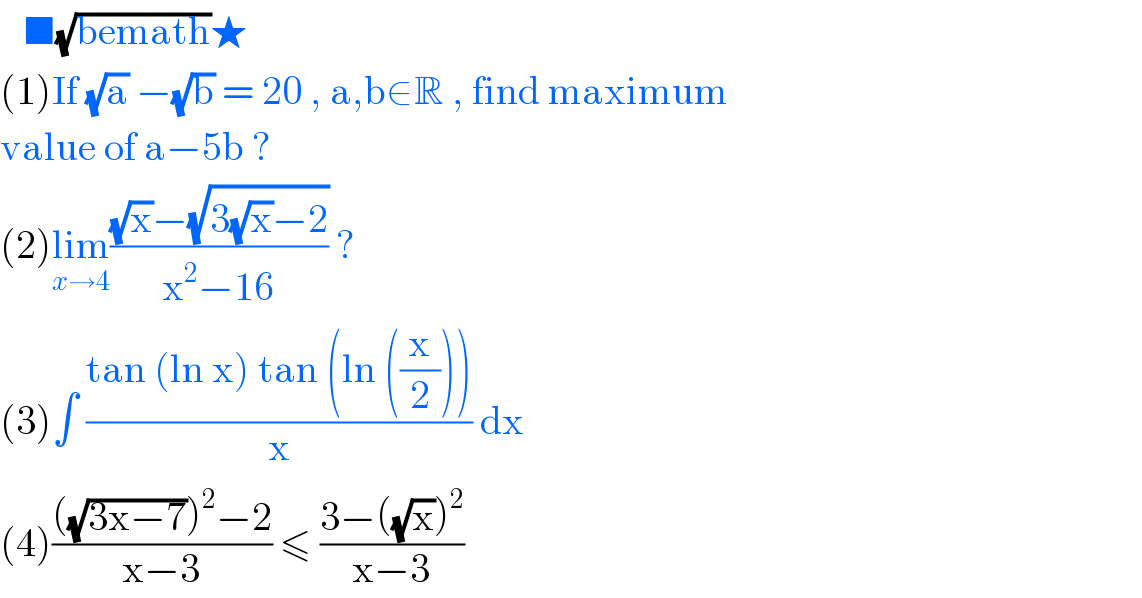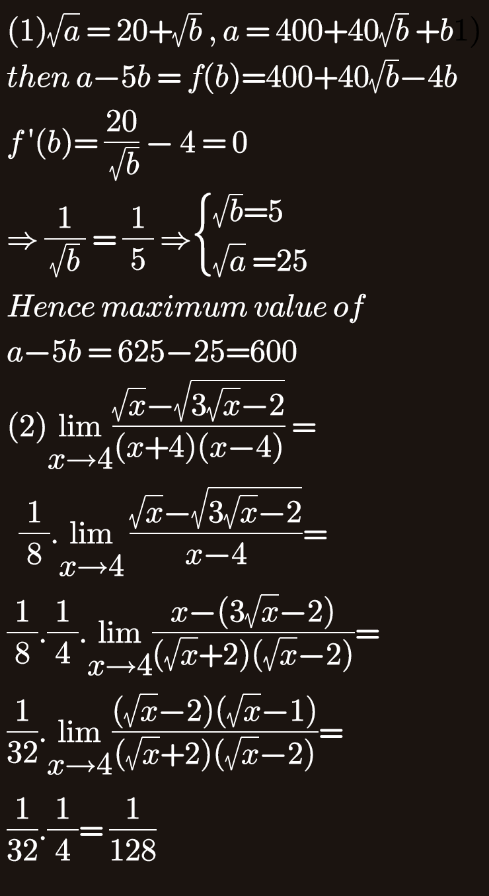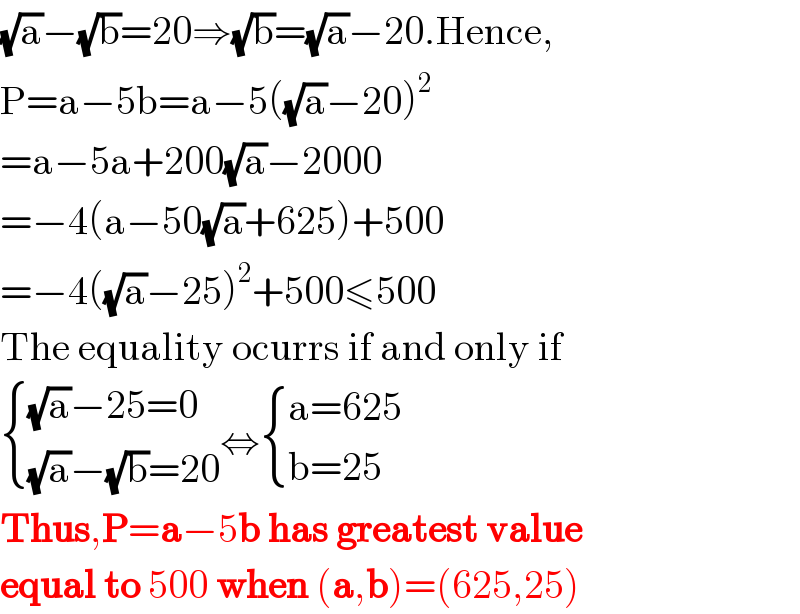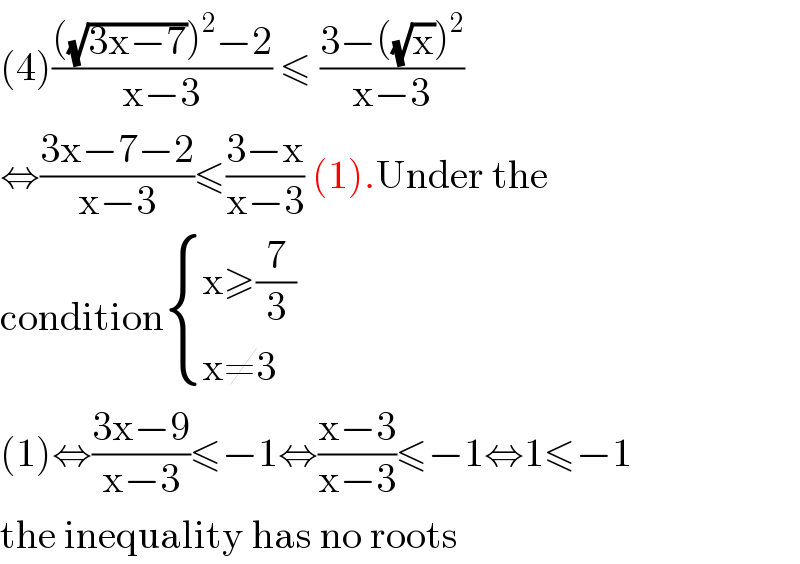
Question and Answers Forum
Question Number 110944 by bemath last updated on 01/Sep/20

Commented by bemath last updated on 01/Sep/20

Commented by 1549442205PVT last updated on 02/Sep/20

Commented by bemath last updated on 02/Sep/20

Answered by john santu last updated on 01/Sep/20

Commented by bemath last updated on 01/Sep/20

Answered by Dwaipayan Shikari last updated on 01/Sep/20

Answered by 1549442205PVT last updated on 02/Sep/20

Answered by 1549442205PVT last updated on 02/Sep/20
![2)Set x−4=t(x→4)∼(t→0),x=t+4 (2)lim(((√x)−(√(3(√x)−2)))/(x^2 −16)) =lim_(t→0) (((√(t+4))−(√(3(√(t+4))−2)))/((t+4)^2 −16)) =lim_(t→0) ((t+4−(3(√(t+4))−2))/( [(√(t+4))+(√(3(√(t+4))−2]))(t^2 +8t))) =lim_(t→0) ((t+6−3(√(t+4)))/( [(√(t+4))+(√(3(√(t+4))−2]))(t^2 +8t))) =lim_(t→0) (((t+6)^2 −(3(√(t+4)))^2 )/( [(√(t+4))+(√(3(√(t+4))−2]))(t^2 +8t)(t+6+3(√(t+4))))) =lim_(t→0) ((t^2 +12t+36−9t−36)/( [(√(t+4))+(√(3(√(t+4))−2]))(t^2 +8t)(t+6+3(√(t+4))))) =lim_(t→0) ((t+3)/( [(√(t+4))+(√(3(√(t+4))−2]))(t+6+3(√(t+4)))(t+8))) =(3/((2+2)(6+6).8))=(1/(128))](Q111089.png)
Answered by 1549442205PVT last updated on 02/Sep/20

Commented by bemath last updated on 02/Sep/20

